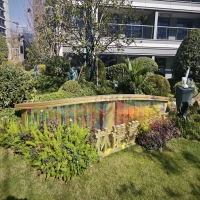Welcome to the website for landscape facilities products and knowledge.
How are the edges and seams of the trash can designed to prevent injury or snagging?
The edges and seams of a trash can are meticulously designed to prioritize user safety and prevent injuries or snagging. Modern trash bins often feature rolled or rounded edges, which eliminate sharp corners that could cause cuts or scratches. Manufacturers use seamless molding techniques to create smooth, uninterrupted surfaces, reducing the risk of fabric or skin catching on rough spots.
For metal trash cans, edges are typically hemmed or folded inward, creating a blunt, safe finish. Plastic models often undergo precision molding to ensure no burrs or sharp protrusions remain. High-quality bins may include rubberized edges for added protection, particularly in commercial or healthcare settings where safety is critical.
Seams are strategically placed in less accessible areas and often reinforced with smooth welding or bonding methods. Some designs incorporate hidden seams beneath decorative trims, maintaining both aesthetics and safety. Ergonomic handles are seamlessly integrated to avoid pinch points while lifting.
These safety-focused designs not only protect users but also enhance durability by eliminating weak points where cracks or tears might develop. Whether for home, office, or industrial use, contemporary trash can engineering demonstrates remarkable attention to injury prevention through thoughtful edge and seam construction.
Related search:

Recommendation
Metal and acrylic color-changing combined curtain wall for large-scale public landscape facilities